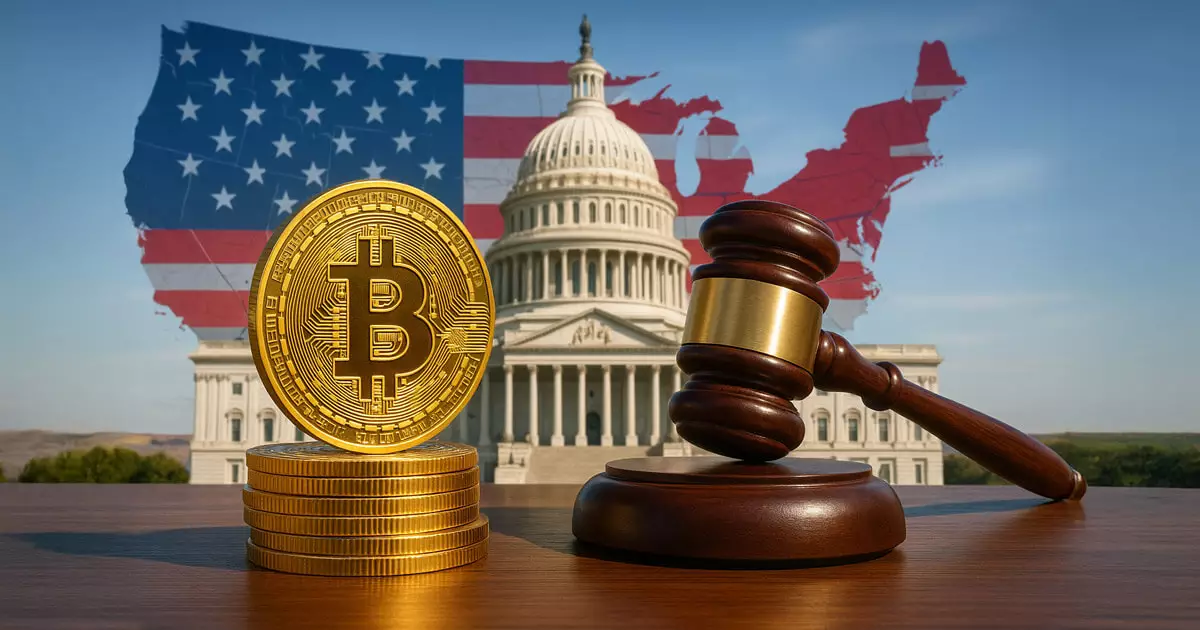As the digital asset ecosystem evolves, the urgent need for a clear regulatory framework cannot be overstated. The recent introduction of the Digital Asset Market Clarity Act by House Financial Services Committee Chairman French Hill represents a notable step in the right direction. This bipartisan bill aims to unify cryptocurrency regulations under a comprehensive federal regime, categorizing various types of digital assets distinctly and addressing long-standing ambiguities between securities and commodities law. However, while the intentions behind the legislation carry significant weight, the execution and potential ramifications of such policies warrant a critical examination.
The proposal, with its ambitious 249 pages, is designed to provide the “long-overdue clarity” needed for both innovators and investors in the cryptocurrency space. It delineates specific definitions, such as “digital commodity” and “permitted payment stablecoin,” which is instrumental in establishing a predictable legal landscape. Underprepared entrepreneurs have struggled under current regulations that range from vague to outright nebulous. The introduction of this bill could indeed empower these players, yet, we must cautiously navigate the potential pitfalls of overregulation.
Safe Harbors and Investment Opportunities
The legislation introduces a four-year safe harbor for primary token offerings that meet certain criteria, including a maximum raise of $75 million within a 12-month period. This provision is particularly commendable as it offers a buffer for blockchain projects to mature without the looming threat of regulatory backlash. However, does this really go far enough? With the pace of technological advancement in mind, a four-year timeframe could seem constrictive. The innovation world thrives not on stagnation but on growth, and perhaps more flexibility or extension possibilities are needed to ensure that emerging technologies can flourish.
Furthermore, the classification of secondary trades as being outside securities jurisdiction raises both curiosity and concern. While it aims to mitigate the uncertainties brought forth by the Howey Test and facilitate exchange listings, one must wonder if this could create loopholes that the unscrupulous could exploit. The aim to eliminate regulatory barriers must not come at the cost of investor protection, a delicate balance that the legislators must tread carefully.
CFTC’s Expanding Arena
Central to the bill’s proposition is the shift of oversight to the Commodity Futures Trading Commission (CFTC) for spot trading, brokerage, and custody of digital commodities. This move signifies a pivotal change in the way digital assets are organized within the financial landscape. Transitioning these responsibilities to the CFTC, paired with a streamlined registration process for native crypto venues, feels like a necessary evolution. Yet, will it be enough to establish a genuinely secure marketplace for digital transactions?
Critics might argue that this dual oversight for hybrid products could lead to regulatory duplication and confusion. The careful orchestration between CFTC and Securities and Exchange Commission (SEC) is paramount. Ensuring that both entities act in cohesion rather than competition should be a priority, lest we fall into bureaucratic gridlock, a fate too common in governmental frameworks.
Industry and Political Dynamics
It is worth noting the multifaceted support this act enjoys from both Republican and Democratic lawmakers. The bipartisan nature of the bill, as highlighted by Democratic co-sponsors Angie Craig, Ritchie Torres, and Don Davis, illustrates a shared recognition of the necessity for regulatory clarity. However, this coalition also raises questions about the nature of bipartisan agreements, which sometimes can veer into the realm of compromise over quality. The concept of “consumer protection” and “regulatory gaps” needs to be revisited critically to ensure they do not become catchphrases that eventually dilute effective governance.
Representatives who praise the bill as a means to “democratize” access to digital currencies may overlook the implications of overreach. As empowering as it is to establish rules of the road for businesses, vigilance against the encroachment of state control on personal freedom in transactions and self-custody remains pivotal in these discussions.
Ultimately, as this bill transitions toward possible committee votes and larger considerations, all stakeholders—lawmakers, industry leaders, and consumers alike—must engage in just as vigorous a dialogue about its future implications as has taken place in its inception. Navigating the digital frontier requires wisdom and foresight, accompanied by a healthy skepticism that encourages transparency and genuine innovation.

